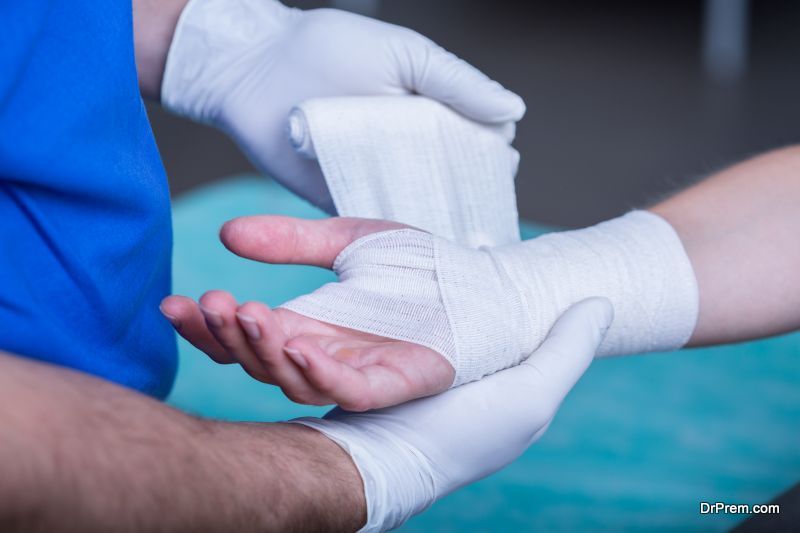If you or a loved one has ever been in a car accident, you know that it can be an extremely scary event. When you’re lucky, your vehicle can suffer the brunt of the damage. But what happens when you don’t show any substantial or obvious signs of injury following an accident? How can you be sure that nothing else is wrong?
This article will help outline some of the most common automobile accident injuries and the warning signs that you might need medical attention. Treatment options will also be discussed.
Whiplash

This is likely the most common and widely recognized car accident injury that people suffer. The reason being that during a car accident, occupants are often jerked forward and then quickly thrown back into their seats, especially when a vehicle is struck from behind. And whiplash is a result of this jerking motion.
Individuals suffer from whiplash when their neck is stretched and then quickly snaps back into place. This type of injury can impact both a person’s neck and their back. Whiplash can affect several parts of the body, including:
- Ligaments
- Disks
- Vertebrae
- Spinal cord
- Neck/Back
Some warning signs that you’ve suffered whiplash include dizziness or feelings of vertigo, headaches, difficulty focusing, and of course, pain in the above mentioned areas of the body.
Chiropractic care can help ease a lot of the pain and discomfort you might be feeling due to whiplash. If additional attention is needed, the chiropractor will recommend the necessary steps to take.
Brain Injuries
The most common, and least serious, of the brain injuries you may experience following an accident is a concussion. Concussions are mild forms of a traumatic brain injury, also known as a TBI.
Concussions are a result of the brain being shaken or jarred inside the skull. This can happen during a car accident if victims either hit their heads on the window, steering wheel, or dashboard but can also be another result of whiplash. Any movement that jars a person’s head in a violent manner can cause a concussion. Even if you don’t have any visible damage to your face or skull, you may still have a concussion.
Recognizing the signs of a concussion is extremely important. This will help you to take the necessary precautions following the event. Signs that you may have a concussion include:
- Headache
- Confusion
- Memory loss
- Nausea/vomiting
- Fatigue
- Ringing in the ears
If you are experiencing any of these symptoms, it’s important to seek medical attention. Once your concussion has been diagnosed by a medical professional, you’ll need to take certain safety measure for approximately a week following the event. Most of these measures are designed to allow your brain time to rest.
This means limiting any type of prolonged screen time including watching TV, a tablet, or even using your cell phone. It’s also suggested you avoid too much social interaction or stimulation. Your doctor will likely recommend you restrict your activity and exercise for at least one week.
Upper Body Injuries

There is a strong possibility that if you’ve been involved in a car accident that you might incur head and facial injuries outside of a concussion. These injuries are usually visible and can include cuts, bumps, and bruises. These are caused by a multitude of things from broken glass, impact against the steering wheel or doors, and contact with other parts of the car. Head injuries can also occur if your vehicle’s airbags are deployed.
For some people, their seat belt can actually cause bruising or injury. Your seat belt is designed to hold you in place in the event of an accident. The pressure of the seat belt on your body can injure the chest, stomach, ribs, and neck but it will also save your life. It’s important to ensure you’re wearing your seat belt correctly to avoid additional, preventable injuries.
Facial Injuries
Facial injuries in car accidents are fairly common and it’s no surprise with the amount of impact that occurs during these events. Victims sometimes experience hearing and vision loss following trauma to that area of the body.
Hearing loss is a result of a severe blow to the head. This type of injury can cause the three bones of the inner ear to shift out of place, preventing sound from properly entering the ear. Some victims may also experience a ruptured eardrum depending on the severity of the blow. Vision loss can result from both direct trauma to the eye, as well as brain or head trauma.
An individual’s teeth and jaw are also subject to injury during violent car accidents. Victims can lose teeth during sudden impact. An individual’s jaw can actually become dislocated even in very low impact crashes. An unknown fact about jaw injuries is that they can present themselves immediately, or take several years for symptoms and complications to arise.
Internal Injuries

The reason internal injuries are so difficult to diagnose is the fact there are often no visible symptoms or identifying factors. The most common internal injuries following an accident are bruising and/or bleeding.
Unfortunately, these injuries often go unnoticed for some time, until symptoms become more obvious and troublesome. Blunt trauma is the most common cause of internal injury and happens when the body collides with an outside object at a high rate of speed. This is another reason why blunt trauma injuries are common during car accidents.
If you’re experiencing discomfort or swelling in your abdomen, this might be a sign of an internal injury to your liver or spleen. Other signs of internal injury include:
- Dizziness/Headache
- Deeply purple skin
- Swelling/Tightness/Pain of the skin
- Seizures
Internal injuries are caused when blood vessels are shifted and moved out of place beneath the skin. When this happens, other organs and parts of the body can be negatively affected. Victims may require an IV drip to help regulate blood pressure levels. Ultrasounds and CT scans will help determine if there is internal bleeding present and exactly what impact it’s having on your body. Sometimes, surgery is necessary to treat and repair internal issues.
Better Safe Than Sorry
It’s always best to err on the side of caution when discussing car accidents and car accident injuries. If police and medical personnel arrive on scene, it’s in your best interest to accept the medical attention they’re offering. You might not see any visible signs of injury, but that doesn’t mean you won’t soon feel the physical effects of the incident.
Monitor how you’re feeling for several days following any type of automobile accident and seek medical attention if you experience any type of discomfort, disorientation, or pain.
Article Submitted By Community Writer




